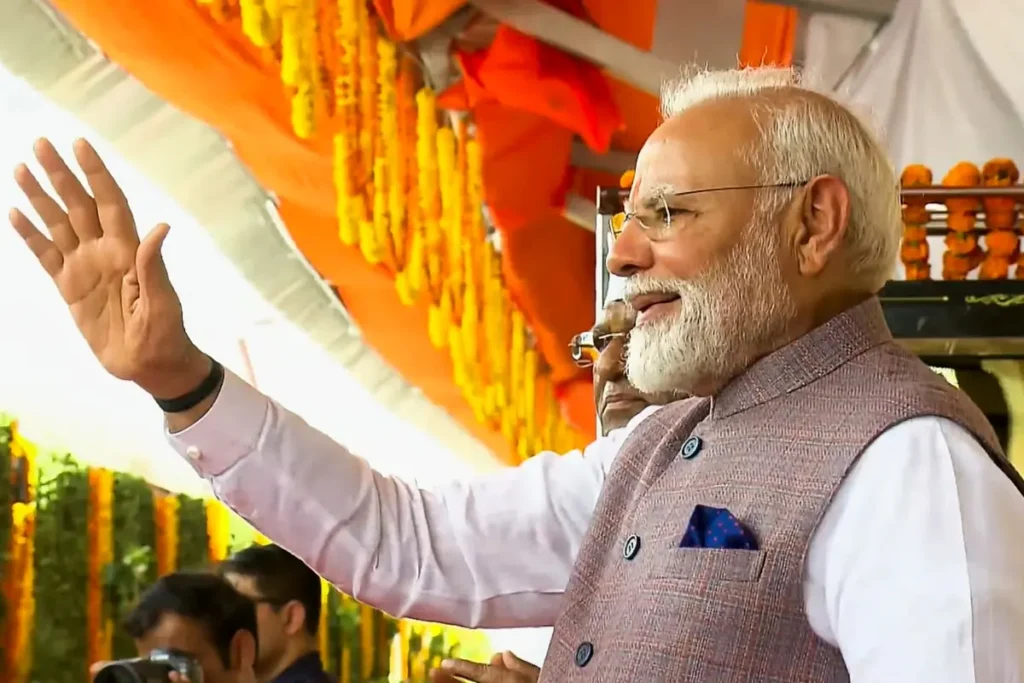
In a significant stride towards modernising India’s railway infrastructure, Prime Minister Narendra Modi inaugurated 103 redeveloped railway stations under the Amrit Bharat Station Scheme on May 22, 2025. This initiative, aimed at enhancing passenger amenities and integrating local heritage, marks a pivotal moment in the nation’s transport evolution.
Amrit Bharat Station Scheme: A Vision for Modernisation
Launched in 2023, the Amrit Bharat Station Scheme is an ambitious project by the Ministry of Railways to redevelop over 1,300 stations across the country. The scheme focuses on improving station facilities through master plans that include better access, waiting halls, toilets, lifts, escalators, cleanliness, free Wi-Fi, and kiosks promoting local products. Additionally, it emphasizes the integration of stations with surrounding urban areas, promoting multimodal connectivity, and implementing sustainable solutions.
A Nationwide Transformation
The 103 stations inaugurated span various states, including Uttar Pradesh, Chhattisgarh, and Telangana. In Uttar Pradesh, 19 stations were revamped, featuring climate-controlled waiting rooms, escalators, lifts, digital displays, and eco-friendly designs that reflect regional cultural elements. In Chhattisgarh, five key stations were upgraded, incorporating modern waiting halls, high-mast lighting, digital display boards, and ramps for differently-abled individuals, and separate waiting areas for women. Telangana also witnessed significant developments, with 40 Amrit stations selected for redevelopment, complete rail electrification, and new rail lines, enhancing connectivity and infrastructure.
Bandra-Bikaner Weekly Train Service: Enhancing Connectivity
In addition to the station upgrades, PM Modi launched a new weekly train service between Bandra Terminus in Mumbai and Bikaner in Rajasthan. This service aims to improve connectivity between Maharashtra and Rajasthan, facilitating easier travel for passengers and boosting economic and cultural exchanges between the two states.
Cultural Integration in Station Designs
The redevelopment of these stations incorporates elements of local architecture and culture. For instance, the Balasore station in Odisha is designed based on the Jagannath temple in Puri, while the Ahmedabad station draws inspiration from the Modhera Sun Temple. Similarly, stations in Sikkim, Rajasthan, and Tamil Nadu reflect regional architectural styles, ensuring that modernisation does not come at the cost of cultural heritage.
Economic and Social Impacts
The Amrit Bharat Station Scheme is not just about infrastructure; it is a catalyst for economic and social development. By improving station facilities, the scheme enhances the overall passenger experience, making train travel more comfortable and accessible. The integration of local products through initiatives like ‘One Station One Product’ promotes regional businesses and tourism, contributing to the local economy. Moreover, the emphasis on sustainable and environmentally friendly solutions aligns with the government’s commitment to green development.
Looking Ahead
The inauguration of these 103 stations and the launch of the Bandra-Bikaner train service are part of a broader vision to transform India’s railway network into a modern, efficient, and culturally rich system. As more stations are redeveloped and new services are introduced, the Indian Railways is poised to play a pivotal role in the nation’s growth and development.
In conclusion, PM Modi’s initiatives reflect a commitment to modernising India’s infrastructure while preserving its rich cultural heritage. The Amrit Bharat Station Scheme and the new Bandra-Bikaner train service are steps towards a more connected and prosperous India, where modernity and tradition coexist harmoniously.




































Leave a Reply